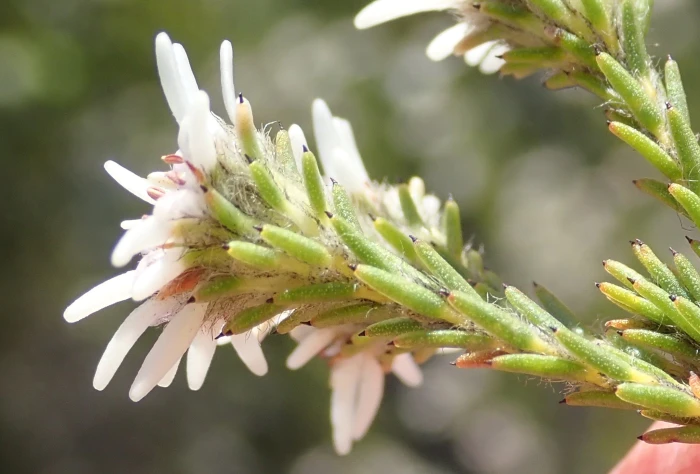Mini Diamond Eyes
(Staavia radiata)
Mini Diamond Eyes (Staavia radiata)
/
/

Nicola van Berkel
CC BY-SA 4.0
Image By:
Nicola van Berkel
Recorded By:
Copyright:
CC BY-SA 4.0
Copyright Notice:
Photo by: Nicola van Berkel | License Type: CC BY-SA 4.0 | License URL: http://creativecommons.org/licenses/by-sa/4.0/ | Rights Holder: Nicola van Berkel | Publisher: iNaturalist | Date Created: 2019-08-30T09:19:40-07:00 |



















































Estimated Native Range
Climate Requirements for Richmond, Virginia
| This Plant | Your Site | Plant Suitability for Your Location | ||
|---|---|---|---|---|
| • Precipitation | 14" - 34" | 43" | Aquatic | Aquatic |
| • High Temp. | 71°F - 89°F | 90°F | Your summers may be too hot for this plant. | Too hot |
| • Low Temp. | 39°F - 50°F | 27°F | Your winter temperatures may be too cold for this plant | Too cold |
This plant may not grow well at your location - your precipitation is too high.
Summary
Staavia radiata, commonly known as Mini Diamond Eyes, is an evergreen shrub native to the fynbos region of Southwestern South Africa, which is characterized by heathland, shrubland, and renosterveld. It typically grows to a height and width of 2-3 feet (0.6-0.9 meters), forming a compact, rounded shape. Staavia radiata is known for its small, needle-like leaves and clusters of tubular flowers that come in shades of pink, white, and yellow, blooming profusely in the spring and summer months, adding a splash of color to the garden.
This plant is valued for its drought tolerance and ability to thrive in poor, sandy soils, making it an excellent choice for water-wise gardens and rockeries. It is also used in borders and as a low hedge. Staavia radiata requires full sun to flower abundantly and prefers well-drained soils. While it is generally low-maintenance, it may be susceptible to root rot if overwatered. It is not widely known for having aggressive roots or being particularly prone to diseases. Due to its origin in a Mediterranean climate, it is well-suited to similar conditions in cultivation.CC BY-SA 4.0
This plant is valued for its drought tolerance and ability to thrive in poor, sandy soils, making it an excellent choice for water-wise gardens and rockeries. It is also used in borders and as a low hedge. Staavia radiata requires full sun to flower abundantly and prefers well-drained soils. While it is generally low-maintenance, it may be susceptible to root rot if overwatered. It is not widely known for having aggressive roots or being particularly prone to diseases. Due to its origin in a Mediterranean climate, it is well-suited to similar conditions in cultivation.CC BY-SA 4.0
Plant Description
- Plant Type: Shrub
- Height: 2-3 feet
- Width: 2-3 feet
- Growth Rate: Moderate
- Flower Color: Pink, White, Yellow
- Flowering Season: Spring, Summer
- Leaf Retention: Deciduous
Growth Requirements
- Sun: Full Sun
- Water: Low, Medium
- Drainage: Fast
Common Uses
Low Maintenance, Potted Plant, Rock Garden
Natural Habitat
Native to the fynbos region of Southwestern South Africa
Other Names
Common Names: Altydbos, Altydbossie, Glasogies
Scientific Names: Staavia radiata, Brunia radiata, Phylica radiata, Phylica nuda
GBIF Accepted Name: Staavia radiata (L.) Dahl